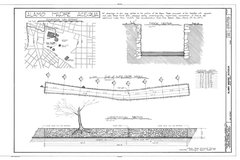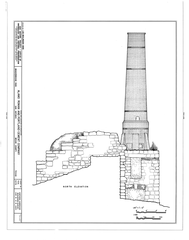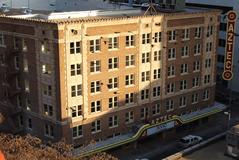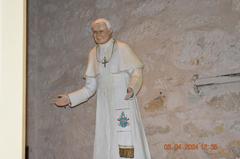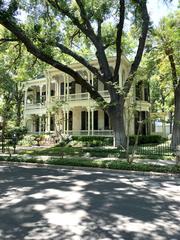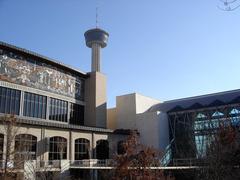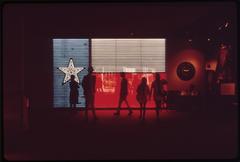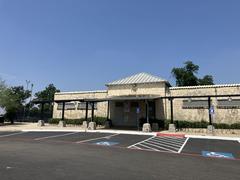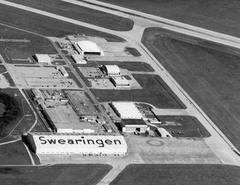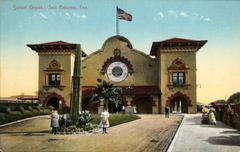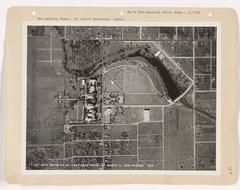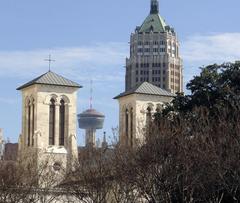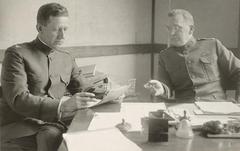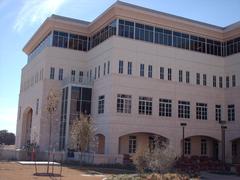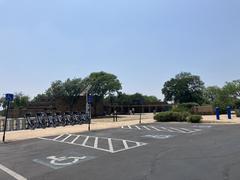
Mission San Francisco de la Espada: Visiting Hours, Tickets, and San Antonio Historical Sites Guide
Date: 04/07/2025
Introduction
Mission San Francisco de la Espada is one of San Antonio’s most significant historical landmarks, offering visitors a direct connection to Texas’s Spanish colonial heritage. Originally founded in 1690 as Mission San Francisco de los Tejas, it was relocated to its present site on the banks of the San Antonio River in 1731. As the oldest mission in the San Antonio Missions National Historical Park, Espada is not only an architectural gem but also a living testament to centuries of history, spiritual tradition, and the enduring fusion of Spanish and Indigenous cultures. This guide provides detailed information on visiting hours, ticketing, architectural highlights, travel tips, and nearby attractions to ensure an enriching visit to this UNESCO World Heritage Site (NPS Mission Espada; SAH Archipedia).
Table of Contents
- Introduction
- Historical Overview
- Architectural Features
- Life at the Mission
- Espada’s Role in the Mission System
- Visitor Information
- Nearby Attractions and Amenities
- Preservation and Legacy
- Community and Contemporary Relevance
- Frequently Asked Questions (FAQ)
- Plan Your Visit
- References
Historical Overview
Founding and Early History
Mission Espada’s roots trace back to 1690, when Franciscan missionaries established Mission San Francisco de los Tejas in East Texas (NPS Mission Espada). The mission was intended to convert the Tejas (Hasinai) people to Christianity and secure Spanish territorial claims. However, disease, crop failures, and conflicts forced its closure and eventual relocation. In 1731, the mission was moved to its current San Antonio River site and renamed Mission San Francisco de la Espada, where it enjoyed better resources and proximity to other Spanish settlements (TSHA Online).
Historical Significance
As the earliest mission in Texas, Espada played a pivotal role in the Spanish colonial strategy of converting and integrating Indigenous populations while forming the backbone of territorial defense (San Antonio Missions Guide). Espada’s acequia irrigation system, constructed between 1731 and 1745, remains the oldest continuously operating system of its kind in the United States (NPS Mission Espada). The mission’s partial secularization in 1794 and complete secularization in 1824 marked the transition from the Spanish mission era to Mexican control.
Architectural Features
Mission Espada is celebrated for its unique blend of Spanish Colonial and Moorish architectural influences, adapted to the realities of frontier Texas. Key features include:
- Stone Church: Built in 1756, the church’s horseshoe arch entrance and espadaña (bell gable) are rare in North American mission architecture (SAH Archipedia).
- Convento (Friary): Completed in 1745, the convento housed Franciscan friars and stored mission records and supplies.
- Acequia and Espada Aqueduct: The hand-dug acequia and the Espada Aqueduct, built by Indigenous labor under Franciscan supervision, exemplify early engineering ingenuity and are still functional today (National Park Service).
- Interior: The church’s simple nave, whitewashed walls, and 18th-century statue of St. Francis reflect Franciscan values of humility and devotion.
- Defensive Walls: Remnants of original stone and adobe walls reflect the mission’s need for protection on the frontier.
Life at the Mission
Daily life at Espada centered on religious instruction, agriculture, and the transmission of Spanish crafts and skills to Indigenous residents. The mission’s acequia enabled successful farming of crops such as corn, beans, and squash, while the friars taught blacksmithing, weaving, and masonry (NPS Espada Plan Your Visit). Over time, Indigenous converts contributed significantly to the mission’s prosperity as artisans and farmers.
Espada’s Role in the Mission System
Espada was part of a network of five missions along the San Antonio River—alongside Mission Concepción, Mission San José, Mission San Juan Capistrano, and the Alamo. Together, these missions formed a cultural and defensive corridor that shaped San Antonio’s development and are collectively designated as a UNESCO World Heritage Site (San Antonio Missions Guide; NPS Mission Espada).
Visitor Information
Visiting Hours and Tickets
- Hours: Mission Espada is open daily from 9:00 AM to 5:00 PM. The grounds are accessible from sunrise to sunset (npplan.com).
- Admission: Free; no tickets required. Donations to the National Park Service are appreciated.
Accessibility
- Most areas are wheelchair accessible, with paved pathways and ramps. Some historic spaces have uneven surfaces.
Guided Tours and Special Events
- Ranger-led tours are offered seasonally; check the NPS website for current offerings. Special events include craft demonstrations and religious festivals.
Photography and Best Times to Visit
- Early morning and late afternoon offer the best lighting for photos.
- Photography is permitted, but flash and tripods may be restricted inside the church.
Parking and Transportation
- Free parking available in two lots: main lot inside the west gate and a secondary lot south of the mission (npplan.com).
- VIA Metropolitan Transit buses, rideshare services, and the Mission Reach Hike and Bike Trail provide easy access.
Nearby Attractions and Amenities
- Other Missions: Explore Mission Concepción, Mission San José, Mission San Juan, and the Alamo via the Mission Reach Trail.
- Restrooms and Gift Shop: Available on-site. No food services, but picnic areas are provided; nearby neighborhoods offer dining options (Wolters World).
- Espada Aqueduct: A short walk or bike ride from the mission, this National Historic Landmark is a must-see for engineering enthusiasts (NPS brochure).
Preservation and Legacy
Mission Espada is preserved as part of the San Antonio Missions National Historical Park, benefiting from ongoing restoration and educational programming (lasmisiones.org). Visitors can view artifacts such as looms, farm tools, and blacksmith equipment in the Espada School exhibit. The mission remains an active parish serving the local community and stands as a living symbol of Texas’s multicultural heritage (NPS Mission Espada).
Community and Contemporary Relevance
Beyond its historical significance, Mission Espada remains a vibrant community center, hosting weddings, cultural events, and spiritual gatherings. Its location along the San Antonio Missions Trail invites both locals and tourists to explore the broader legacy of Spanish colonization and Indigenous resilience (rosct.com).
Frequently Asked Questions (FAQ)
Q: Is there an entrance fee or ticket required?
A: No, admission is free and tickets are not required.
Q: What are Mission Espada’s visiting hours?
A: Open daily from 9:00 AM to 5:00 PM; the grounds are open sunrise to sunset.
Q: Are guided tours available?
A: Yes, ranger-led tours are offered seasonally. Self-guided exploration is encouraged.
Q: Is Mission Espada wheelchair accessible?
A: Most areas are accessible, though some historic surfaces may be uneven.
Q: Can I bring my pet?
A: Pets are allowed on the grounds (leashed) but not inside buildings.
Q: How do I get to Mission Espada from downtown San Antonio?
A: By car, public transit (VIA bus), rideshare, or the Mission Reach Trail by bike.
Plan Your Visit
- Download the Audiala app for audio tours and interactive maps.
- Check the NPS official site for the latest updates, events, and accessibility information.
- Follow us on social media for news, tips, and events.
Quick Travel Tips
- Visit in spring or fall for mild weather.
- Wear comfortable shoes and bring water.
- Respect the site’s sacred nature—be mindful during church services and avoid climbing on historic walls.
- Allow at least one hour to explore the mission grounds, Espada School, and acequia.
Conclusion
Mission San Francisco de la Espada offers a profound journey into Texas’s colonial past, marked by enduring architecture, engineering marvels, and the blending of cultures. Free admission, accessible amenities, and its scenic location make Mission Espada an essential stop for anyone interested in San Antonio’s history. Enhance your visit with the Audiala app, explore the Mission Reach trail, and immerse yourself in the living legacy of this treasured landmark.
References
- Mission San Francisco de la Espada, National Park Service. (NPS Mission Espada)
- Mission San Francisco de la Espada, National Park Service - Plan Your Visit. (NPS Espada Plan Your Visit)
- San Antonio Missions Guide (San Antonio Missions Guide)
- SAH Archipedia (SAH Archipedia)
- Texas State Historical Association (TSHA) Online (TSHA Online)
- Wikipedia (Wikipedia)
- lasmisiones.org (lasmisiones.org)
- National Park Service (National Park Service)
- NPPlan.com (NPPlan.com)
- Rosct.com (Rosct.com)
- Wolters World (Wolters World)
- San Antonio River Foundation (San Antonio River Foundation)
- NPS brochure (NPS brochure)


